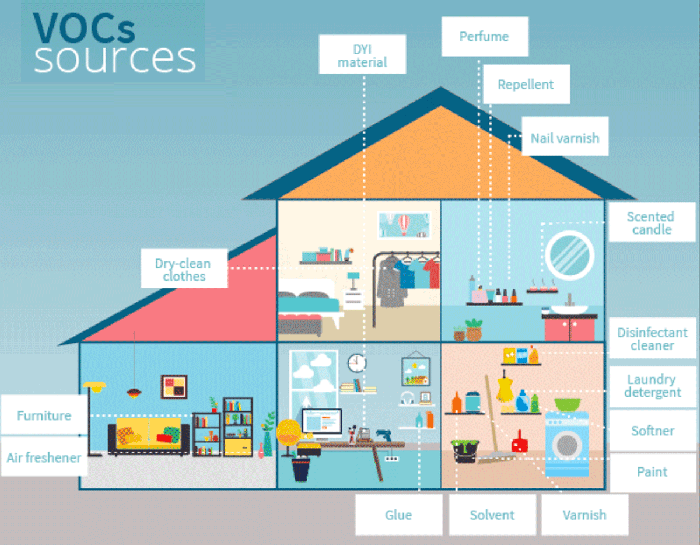VOLATILE ORGANIC COMPOUNDS (VOCS) AGAINST QUALITY AIR LIVING SPACE
WHAT ARE VOLATILE ORGANIC COMPOUNDS (VOCS)?
Volatile organic compounds (VOCs) are carbon-based gases that evaporate very quickly. When VOCs fly in the air, they will react together or combine with another molecule to create new compounds. These new compounds may be harmless or toxic. However, the term VOCs is often referred to as mixtures of airborne toxic organic substances arising from industrial products such as toluene solvents - C6H5CH3, xylene - C6H4 (CH3) 2, dichlorobenzene solvent, ethylphenol solvents, aromatic gasoline, wall paints, adhesives, wallpaper ink, plywood and the list goes on.ORIGIN OF VOCs?
VOCs are naturally and artificially derived. In this article, we will focus on VOCs of artificial origin. Formaldehyde is one of the most popular VOCs in construction products such as wall paint, plywood, glue, ink, etc. Formaldehyde is a stiff, colourless gas with a strong, pungent odour. In addition to some insulation foams, formaldehyde can also be found in some types of curtains and fabrics. Low concentration of formaldehyde can irritate the nose, eyes and throat, with high potential to also cause tearing, sneezing and coughing. At high concentrations, VOCs cause nausea, shortness of breath, and even high fever. This scenario is even worst when VOC is exposed to young children and babies. According to IARC (International Organization for Research on Cancer), Formaldehyde is a substance capable of causing high cancer in the late history of mankind.
According to IARC (International Organization for Research on Cancer), Formaldehyde is a substance capable of causing high cancer in the late history of mankind.
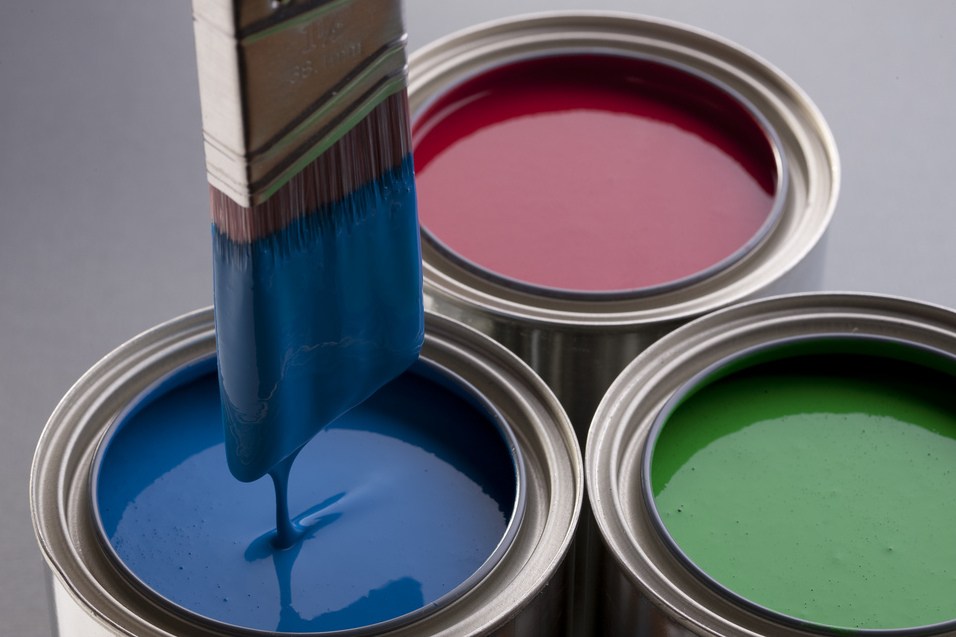 Other sources of VOCs include burning fuels such as gas, wood and kerosene, as well as tobacco products. VOCs may also come from personal bio-products such as aromatherapy and hairspray, cleaning supplies, fluids for washing dry, paint, lacquer, varnish, and even from the widely used copying and printing machines.
Other sources of VOCs include burning fuels such as gas, wood and kerosene, as well as tobacco products. VOCs may also come from personal bio-products such as aromatherapy and hairspray, cleaning supplies, fluids for washing dry, paint, lacquer, varnish, and even from the widely used copying and printing machines.
 VOCs can be released from products during the product usage or even when stored unused. However, the amounts of VOCs emitted from the product tends to decrease when the product becomes older.
VOCs can be released from products during the product usage or even when stored unused. However, the amounts of VOCs emitted from the product tends to decrease when the product becomes older.
HARMFUL EFFECTS OF VOCS ON HUMAN HEALTH.
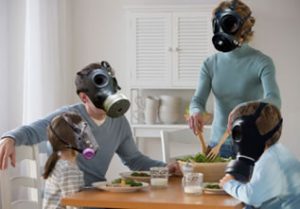 The effects of VOCs on the human body are diverse, heavy, long-lasting and difficult to treat. Some of the threats are as following:
The effects of VOCs on the human body are diverse, heavy, long-lasting and difficult to treat. Some of the threats are as following:
- Causes cancer in humans and has been shown to cause cancer in animals. The health effects caused by VOCs depend on the concentration and duration of exposure.
- Physiology Disorder: Reduce kidney and liver function, cause infertility, reduce testicles, cause birth defects. Increased risk of heart disease, blood damage.
- Psychology Disorder: Depression, irritability, fatigue
- Hormones Abnormality: Reducing testosteron, LH (Lutenizing Hormone) - Important hormones that determine physiology in men.
- When VOCs are high, people with asthma and chronic lung swelling will increase. Especially for children.
- Damage to Central Nervous System: Reduced memory, reduced cognitive ability, reduced ability to coordinate actions between eyes and hands, eyes and legs, reducing balance.
- Damage to Peripheral Nervous System: trembling limbs, tired limbs, clumsy movements.
METHODS TO AVOID EXPOSURE TO VOCS?
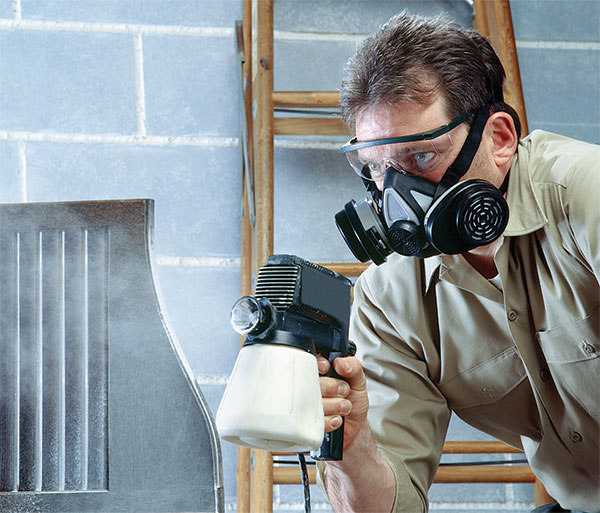
First, you need to know the daily toxic volatile organic substances that you are exposing to - VOCs are inevitable but we can find some ways to limit as much as possible. Here are some simple and easy ways to do it:
- Using construction materials emits less VOCs than others. Select paint, wallpaper, plywood, adhesive products that passed VOCs test and certified safe.
- Do not store substances with large VOCs, such as paints, detergents, etc. If required, cover them tightly.
- Store products in a separate room; preferably in outdoor storage, or in places with a lot of ventilation.
- If VOCs cannot be removed, minimize exposure by sealing surfaces such as sawdust plywood panels or using waterproof coatings, such as polyurethane varnish or latex paint.
- Open your windows and doors regularly to allow air to circulate.
- Remove old or unnecessary bottles containing VOCs from your home. Do not throw unused products into home waste.
- Avoid smoking.
- Use indoor plants with the effect of air purification such as: daisy, white flower daisy, ivy, tiger tongue, magnolia tree, Madagascar hymen, and many more.
- Do not mix household cleaning agents or solvents together. You will not be able to predict which toxins are generated from the blend.
- Do not bring freshly laundered clothes into your home if there is still with really strong smell. Expose them in a cool place until dry.
- Supplement some of the following nutrients to speed up the elimination of VOCs outside the body: milk proteins, vegetables, vitamins B group (B1, B2, B6), vitamins E, C, Magnenesium, Selenium.
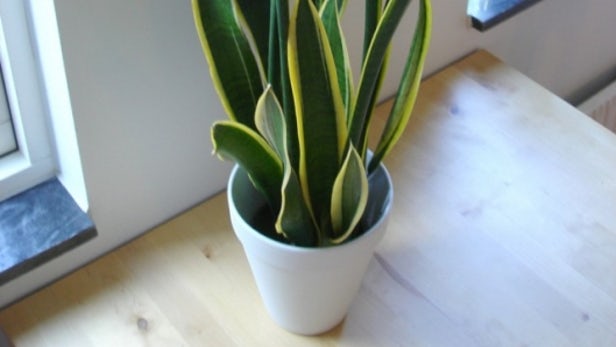
A QUALITY AIR LIVING SPACE
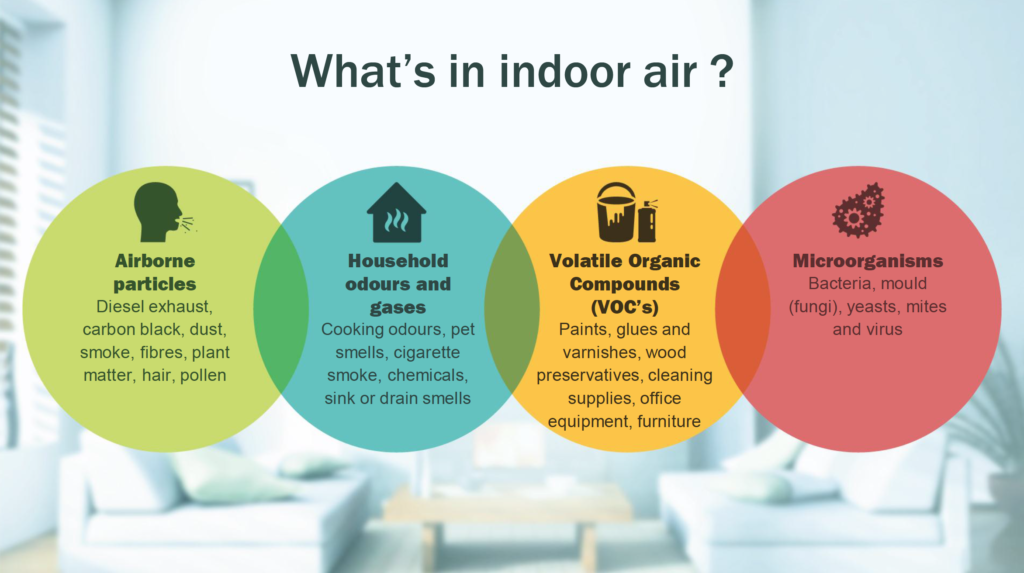
- Make sure there is enough cool and fresh air in your home.
- Increase ventilation by opening windows and doors after you bring new VOC sources into your home, such as new carpets, furniture, or curtains.
- Follow the manufacturer's instructions as indicated on the label when using household chemicals. If the label "must be used in a well-ventilated place", take it out or where there is an exhaust fan or open a window for more ventilation.
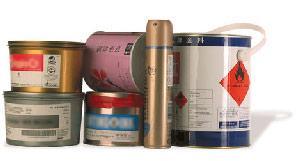
Read More About Other Eco-Friendly Building Materials:
- 10 Types of Green Building Materials That Are Better Than Concrete
- 15 Green Building Materials in Sustainable Construction
- Eco Friendly Construction Materials That Are Popular Globally



